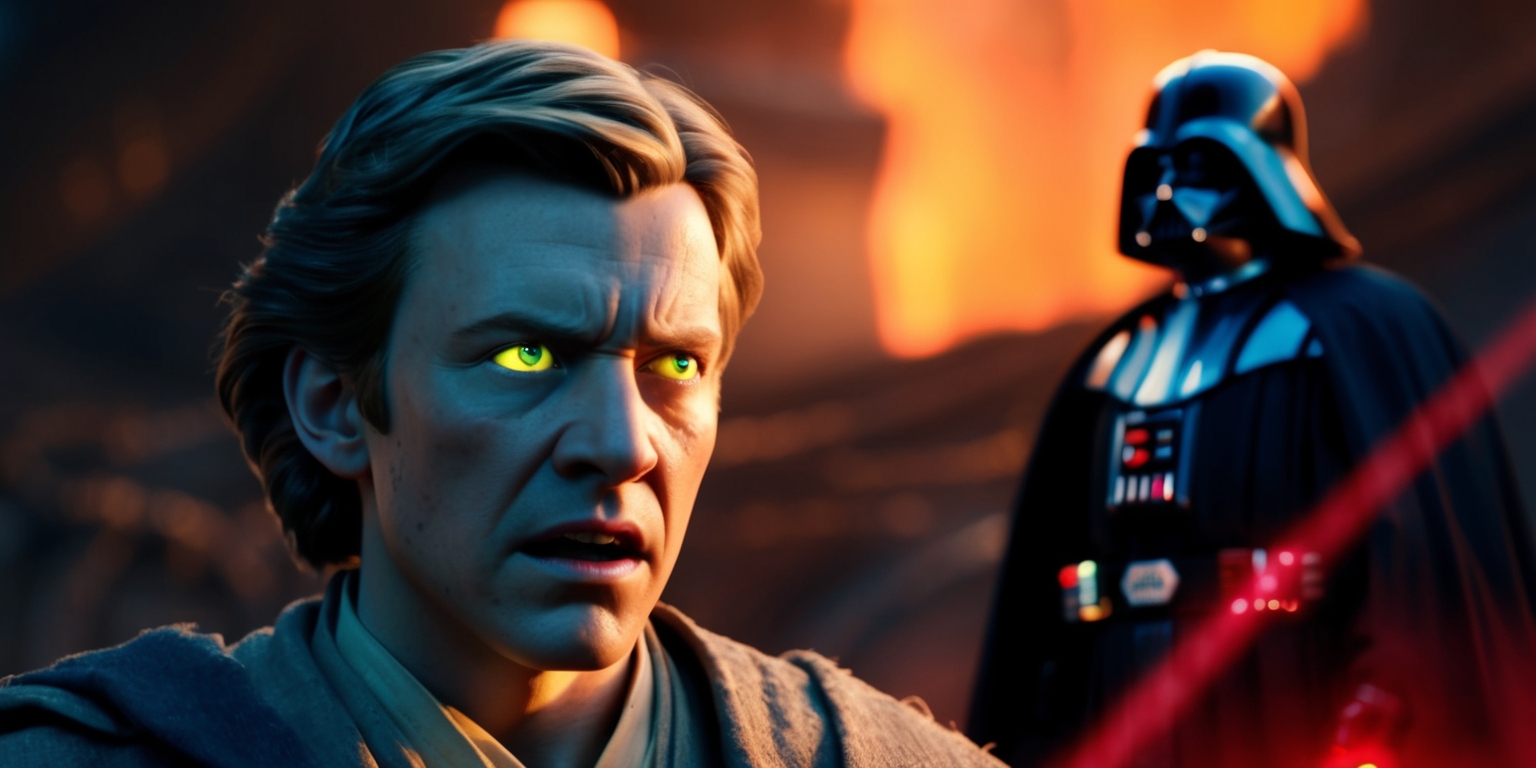The Transformation of Anakin Skywalker: Unveiling the Symbolism of Sith Eyes in Star Wars
- 2025-01-09

Within the sphere of film narratives, a limited number of stories capture the imagination quite like the epic saga of Star Wars. As fans delve deeper into the intricacies of this beloved franchise, the evolution of its characters reveals layers of complexity that underpin their journeys. One particularly captivating aspect is the transformation of Anakin Skywalker, portrayed by Hayden Christensen, who embodies the tragic fall from grace. In an era when prequels redefined the aesthetic and narrative depths of the Star Wars universe, a pivotal discussion arose between Christensen and the mastermind behind it all, George Lucas. This conversation centered around a powerful visual cue that would symbolize Anakin's descent into darkness—his eyes. This examination explores how a simple suggestion led to a moment that would resonate with fans worldwide.
Bringing Anakin to Life
When Hayden Christensen stepped into the role of Anakin Skywalker, he understood the weight of the character's duality. Anakin is torn between light and darkness, making it essential to convey these conflicting forces effectively. The journey he embarks on throughout the trilogy is not merely about becoming Darth Vader; it's about understanding what leads a hero down a treacherous path.
The Symbolism of Sith Eyes
In the expansive Star Wars universe, certain traits symbolize allegiance to the dark side, none more apparent than the striking yellow eyes of the Sith. Every Sith Lord, from the malevolent Emperor Palpatine to the fierce Darth Maul, has been marked by this visual cue. Christensen sought to weave this symbolism into Anakin's character arc, advocating for a clear visual shift that would underscore his tragic fall.
A Pivotal Scene
One of the most intense moments in *Revenge of the Sith* involves the clash between Anakin and Mace Windu. It is here that Anakin’s internal struggles culminate, and Christensen envisioned this scene as the perfect opportunity to visually demonstrate Anakin's corruption. He believed that the moment Anakin severed Windu’s hand should be accompanied by the haunting glow of Sith eyes.
Initial Rejection

Despite Hayden's persuasive arguments, George Lucas was initially hesitant to adopt this suggestion. In discussions with Christensen, Lucas reasoned that Anakin remained conflicted during the confrontation, indicating that he had not yet fully surrendered to the dark side. The balance of good and evil within him was still evident, leading Lucas to reserve the Sith eyes for another moment in the film.
The Essence of Anakin's Fall
Lucas explained that the narrative arc of Anakin’s transformation transcended a simple dichotomy of light and dark. He believed that Anakin's journey involved broader themes of timing and circumstance that influenced his choices. This perspective reflected the intricate storytelling at the heart of the saga, exploring how even the most noble hearts can falter under certain pressures.
Later Compromise
After much contemplation, Lucas eventually agreed to incorporate the iconic Sith eyes but decided to reserve them for a different segment of the movie. Instead of appearing during the initial confrontation with Windu, Anakin would manifest his dark allegiance upon his arrival on Mustafar, ready to obliterate the Separatist forces.
The Mustafar Scene
The transformation of Anakin into Darth Vader reaches a crescendo in the Mustafar scene. With yellow eyes that signal his complete embrace of the dark side, Anakin’s brutality is palpable as he executes the Separatists. This moment is not just a display of violence; it symbolizes a crucial checkpoint in his tragic journey, marking the irrevocable choice he has made.
Fans' Reactions
The use of Sith eyes in the Mustafar scene has had a profound impact on fans and the Star Wars community. The stark visual representation of Anakin's fall resonated deeply with audiences, adding layers to his character and making the moment unforgettable. This significant aspect of storytelling develops an imagery system that amplifies the emotional weight of the narrative.
Legacy of Anakin’s Transformation
Even years after the release of the prequels, the enduring influence of Anakin Skywalker remains mesmerizing audiences. His transformation from Jedi Knight to Sith Lord serves as a cautionary tale within the Star Wars mythos. The choices he makes in the face of adversity, combined with powerful symbolic visuals such as the yellow eyes, echo the complexities of human nature.
Character Exploration in Star Wars
The exploration of Anakin's character reflects broader themes present throughout the Star Wars saga, including redemption, loyalty, and the ongoing battle between good and malevolence. These motifs resonate with viewers throughout generations, making the story timeless and relatable.
George Lucas's Vision
The creative vision of George Lucas has always emphasized depth in character development. Each character in Star Wars is crafted with distinct traits and motivations, serving to illustrate not just a battle between light and darkness but the nuances of personal struggle and redemption.
The Importance of Collaboration
The dynamic between Christensen and Lucas is a a reflection of how crucial teamwork is in the filmmaking process. Through their dialogues, innovative ideas were birthed, transforming an initial vision into a powerful narrative tool that would ultimately shape the Star Wars prequels.
The Enduring Impact of Star Wars
The Star Wars saga transcends being merely a collection of movies; it represents a significant cultural phenomenon phenomenon that continues to inspire new stories, merchandise, and a devoted fanbase. Anakin Skywalker's arc serves as a pivotal element in this universe, encapsulating the timeless struggle of humanity within a fantastical setting.
Where the Saga Stands Today
The galaxy of Star Wars has grown immensely beyond its original trilogies, embracing new characters and storylines through books, animated series, and more. Nevertheless, the legacy of Anakin Skywalker and his transformation into Darth Vader remains foundational to the overall narrative, echoing themes of conflict and redemption that will always resonate with audiences.
Concluding Thoughts
Ultimately, the decision to visualize Anakin's transformation through the use of Sith eyes was not merely a creative choice but a critical storytelling device. It encapsulated the essence of Anakin’s character and the tragic journey from light to dark, ensuring that his story remains a vital part of the Star Wars legacy. The interplay of ideas between Hayden Christensen and George Lucas serves as a reminder that collaborative creativity can lead to iconic moments in cinema that endure through time.





